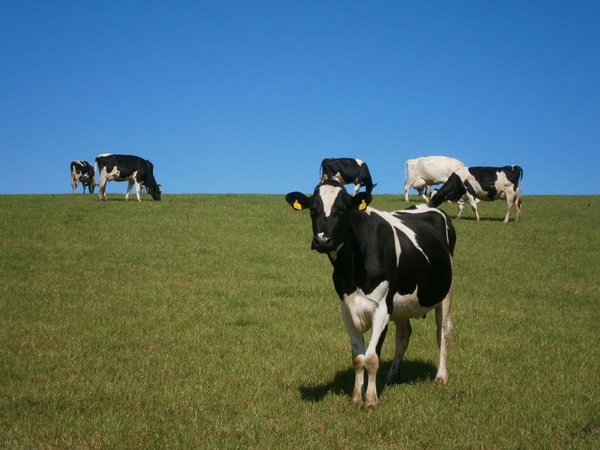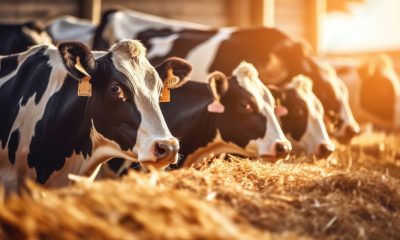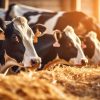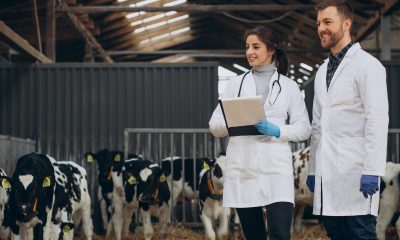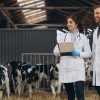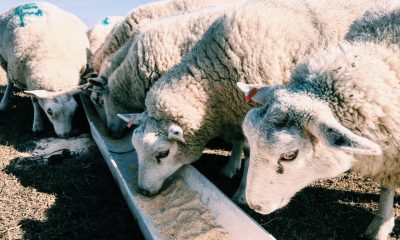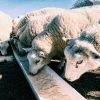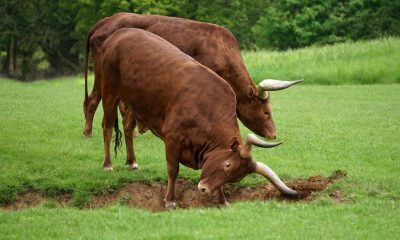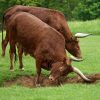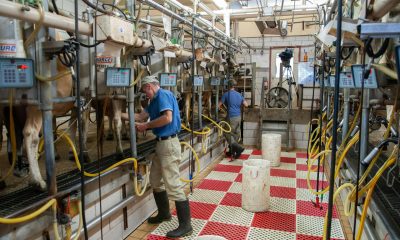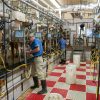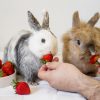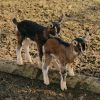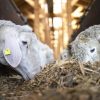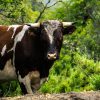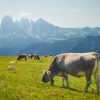Livestock is an asset. However, at present, it has been challenged by climate change, such as the long term imbalance in temperature, wind and rainfall. Climate change and population growth have affected cattle production systems through impaired feed intake, metabolic activities and defense mechanisms. It also affects the productivity and grazing capacity of grasslands. The effects of climate change on the quantity and quality of feeds are dependent on location, livestock system and species. Quantity and quality of feed will be affected due to an increase in atmospheric levels of carbon dioxide and temperature. An increase in carbon dioxide concentration will result in herbage growth changes.
Quality of feed crops and forage may be affected by increased temperature and dry conditions due to variations in water-soluble carbohydrates and nitrogen concentrations. Extreme climate conditions such as floods can affect the form and structure of roots, change leaf growth rate and decrease total yield. The length of the growing season is also an important factor for forage quality and quantity. If forage quality declines, its intake should be reduced and replaced by grains to prevent elevated methane emissions by livestock. Water availability issues will influence the feed crops; hence there is a need to produce crops that demand less water in locations with water scarcity.
Failure to meet the dietary needs of cattle during heat stress affects metabolic and digestive functions. In cattle, reduction in feed intake level leads to a negative energy balance and reduced weight gain. Animals exposed to heat stress reduce feed intake and increase water intake, leading to changes in the endocrine status. Climate change presents a significant challenge to cattle feed availability and production. It undoubtedly threatens the livelihood of farmers by inducing cattle mortality, reducing productivity and health of cattle.
On the other hand, the use of manure and synthetic fertilizers for feed crop production, processing of feed and transport of feed contributes to enormous emissions of harmful gases. It also contributes through the production of nitrogenous fertilizers used to produce crops for animal feed. In addition, leguminous feed crops for livestock account for additional Nitrous Oxide emissions. Animals that contribute the most to livestock harmful gas emissions are beef and dairy cattle. Enteric fermentation is the largest source of these emissions.
The challenge is to strike a balance between productivity, household food security and environmental preservation. To mitigate the effect, the pastoral community has adopted different strategies like environment-friendly feed crops, utilization of underground water and protecting the environment from destruction, which exposes for change. The information available on the impact of climate change should be demonstrated to all pastoralists to design mitigation strategies. It could significantly reduce the effects of climate change on cattle feed if they become part of national and regional policies. Mitigation measures involve modifying production and management systems, breeding strategies, institutional and policy changes, science and technology advances, and changing farmers’ perceptions and adaptive capacity.
The implementation involves diversification of cattle and crops, integrating cattle feed with forestry and crop production, and changing the mode of a farm operation. It can increase drought and heatwave tolerance, increase cattle production when animals are exposed to temperature, and effectively fight against climate change-related diseases and pests outbreaks.
Establishing trees alongside crops and pastures can help maintain the balance between agricultural production and environmental protection and carbon emission from the sector. It can increase cattle productivity as well. Improving feeding practices could indirectly improve cattle efficiency, including modification of diets composition, changing feeding time or frequency and inclusion of agroforestry species in the animal diet and training producers in production and conservation of feed for different ecological zones. It can reduce the risk of animal malnutrition and mortality.
Shifting locations of cattle and crop production could reduce soil erosion and improve moisture and nutrient retention. Another adaptive measure is adjusting the rotation of crops and changing the timing of operations.
Carbon sequestration can be achieved through deforestation. Enteric fermentation can be reduced by increasing dietary fat content, providing higher quality forage, supplements, and vaccines to suppress methane emission. Mitigation measures such as improving nitrogen use efficiency, genetic modifications in plants and use of organic fertilizers, regular soil testing and combining legumes with grasses in pasture areas may decrease the emission of harmful gases.
